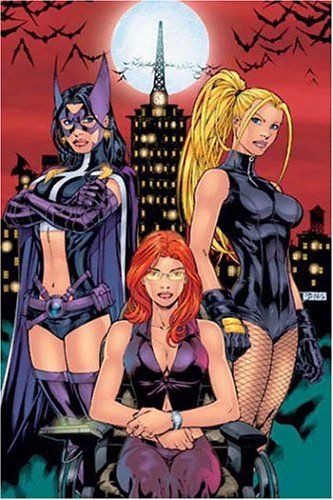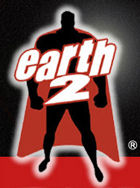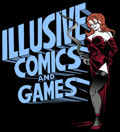| Birds
of Prey: Of Like Minds
I talk often
about the relationship between gender and comics. I have,
on more than one occasion, mentioned that comic book companies
are trying harder and harder to reacquire a female readership,
wresting it back from the clutches of manga and putting
American books in the hands of young females. But it is
few and far between when I talk about the need for women
to be in the industry, a place where they are horribly underrepresented.
Gail
Simone has been running just above the radar within the
comic book industry for the better part of a decade: a writer
for websites about comics (including comicbookresources.com),
Simone went on to become one of the best humorists writing
in comics.
Collaborating
with Lea Hernandez on Oni Press’ Killer Princesses,
Simone went on to titles for Marvel including Deadpool
and Agent X, making a name for herself as a writer
that could handle both humor and action, so when she was
tapped to take over writing duties on Birds of Prey,
few people batted an eyelash. Having never read the title
before I came into this review with no bias, having wanted
to pick up the title long before this and happy finally
to read it.
It’s light,
but good.
I have
only cursory feels on the characters within this book and
they have all come from other writers and titles: I know
Black Canary mostly from Green Arrow and JSA,
Huntress from the Bat-books, and Oracle from the same. I
like the characters, but I can’t honestly say that
I knew them. I can say that Simone doesn’t
really attempt to establish any new characterization for
this ornithological trio; having come into the title fifty-five
issues after the fact, Simone was already working from established
continuity and story connections so she really didn’t
need to.
What
characterization we do see is light, but interesting. Simone
establishes Oracle almost in a maternal way, as she is protective
of her agents (mostly Canary) and at times questions her
ability to send them into hostile situations. Played against
that is the friendship that seems solidly established between
her and Black Canary as Canary plays the part of child going
against mother’s wishes in fighting the good fight
of crime prevention. It’s an interesting and odd dynamic
she sets up for the characters, but it seems to work. Less
interesting is her take on the Huntress; where once stood
a cold-hearted woman who took justice to extreme measures,
now stands a woman that can easily shoot a crossbow bolt
through someone’s leg and nuzzle a baby right after.
It seems out of character for Huntress, but despite this
Simone makes it believable when she highlights Oracle’s
inability to “get a read” on Huntress’
personality.
Simone also does
good things with the wit, humor, and overall structure of
her plotting, especially with the villain Savant created
as a foil to both Black Canary’s fighting ability
and Oracle’s intellectual prowess, not to mention
the first comic book antagonist I can remember that has
dyslexia. Simone remembers that a major part of the enjoyment
in reading this title is the way that physical action (the
fighting, kicking, hair pulling stuff) is balanced with
the intellectual. The reader enjoys watching Black Canary
hand an overly muscled brute his dignity just as much as
seeing Oracle’s planning and plotting come to fruition.
Equal time is given to both and it’s enjoyable.
I am
slightly disappointed in Simone’s humor, as it seems
like she tends toward the sardonic and witty more often
then straight-up, gut-busting belly laughs. I wasn’t
expecting something as good as Barry
Ween, but a little more than some Sex in the
City, almost topical funniness. Yet another example
of this being somewhat “light.”
The artwork from
Ed Benes has me somewhat torn. On the one hand, I enjoy
images of tall, leggy, breast-laden women as much as the
next fanperson, and it can’t be said that Benes doesn’t
have a passable grasp of emotive expression and the ability
to frame action. On the other hand, this kind of artwork
harkens an era in comics that saw the near demise of true
artistry in penciling and panel work, and I dislike Benes
choice in artistic styles. That said, he suffers from few
of the problems that arose from that era (those perpetrated
by the Leifelds and the Churchills): massively disproportionate
anatomy, facial sameness, and a bevy other maligning factors.
It’s just okay artwork with a few extra C-cups lying
around.
Overall,
Of Like Minds is a readable story but it feels
like Simone had reigned herself in. Perhaps this is a result
of the fact that she had yet to establish herself with the
Birds of Prey readership and was playing it safe, writing
a good story, but not a great one. This volume is just good
enough to make the reader want, and expect more from later
issues, and from what I’ve heard about the current
BoP, it seems likely that Simone gets better as she grows
more comfortable. I do recommend this volume, but I do so
at the expectation that subsequent ones will be sufficiently
better. For $14.95, it sometimes pays to be choosey.
Birds
of Prey: Of Like Minds
|






